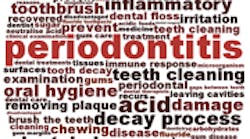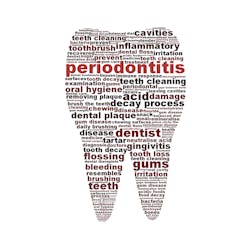AAP: Periodontal disease most prevalent among ethnic minorities
New data from the CDC reinforce high rates in Hispanic, Black, and Asian adults in the United States
63% of Hispanic adults in the United States have periodontitis, an advanced form of periodontal disease. This finding comes from an updated Centers for Disease Control and Prevention (CDC) study published in the Journal of Periodontology.
The study, titled “Update on Prevalence of Periodontitis in Adults in the United States: NHANES 2009-2012,” also reports that Non-Hispanic Blacks have a 59% prevalence rate of periodontitis, followed by Asian-American adults with a prevalence rate of 50%. Regarding age groups, periodontal disease is present in 68% of US adults age 65 and over. Additionally, the study confirms early contentions that approximately half of all U.S. adults age 30 and over—64.7 million Americans—suffer from periodontitis.
According to CDC epidemiologist and lead study author Paul Eke, PhD, MPH, “The updated findings verify a high burden of periodontitis in the US adult population. Public health programs that aim to prevent and control periodontitis are needed to improve the overall health of our adult population.”
“Periodontal disease remains a significant public health issue for people of all backgrounds,” said Joan Otomo-Corgel, DDS, MPH, president of the AAP and a practicing periodontist in Los Angeles. “However, with proper treatment and care from a periodontist, periodontal disease is often reversible. A full-mouth periodontal evaluation is the most accurate way to assess for disease. These findings support the need for all adults age 30 and over to receive an annual comprehensive periodontal evaluation from their dental professional to identify and treat periodontal disease as needed.”
The AAP encourages all adults to undergo a yearly comprehensive periodontal evaluation to assess their periodontal disease risk and to treat disease, if it is present. AAP guidelines indicate that the evaluations are to include both probing depth and attachment loss measurements.
For more information about periodontal disease, visit perio.org.


